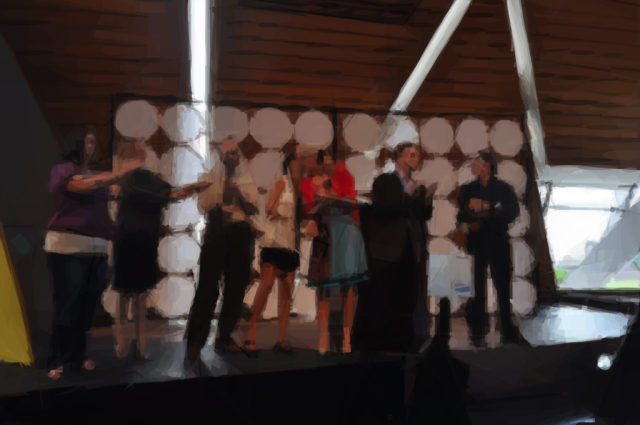
All meetings incorporate power relationships that fundamentally affect their dynamics and potential. Traditional conferences unconsciously promote and sustain power imbalances between the “speakers” at the front of the room and the audience. Such events invoke a version of power Tom Atlee calls Power-over: “the ability to control, influence, manage, dominate, destroy, or otherwise directly shape what happens to someone or something”.
People often tolerate this form of power in their lives (or seek to wield it) because they hold an underlying belief that when you lose control everything turns to chaos. Meeting stakeholders and planners typically subscribe to this viewpoint because they can’t conceive of (usually because they’ve never experienced) a form of meeting that successfully uses a different kind of power relationship: Power-with.
Power-with
Here’s Tom’s description of Power-with:
“Power-with is the kind of power that arises through connection—connection to ourselves, to each other, to what’s going on, and to everything else. We could describe power-with as holistic partnership power. In its most mature and comprehensive form, it involves our ability to see allies, resources, and possibilities anywhere and everywhere, and to engage with them for mutual and collective benefit.”
“Power-with is not the opposite of power-over, because they can and do co-exist. We see power-with enhancing power-over when work teams collaborate to generate market dominance for their company or when activist alliances overwhelm their opponents in the political battlefield. We can also see it in how PR works with people’s instinctive urges and reactions to manipulate them into certain beliefs and behaviors. On the other hand, we see power-over enhancing power-with in competitions that promote collective benefits and win-win solutions, such as the Olympics (at their best) and households and schools competing for the lowest carbon footprint.”
—Tom Atlee, The Dance of Power-over and Power-with
Using Power-with process — my books contain many examples — in our meetings allows us to potentially partner with, learn from, and connect with everyone at the event, rather than a few pre-chosen presenters.
Tom describes the energetics of Power-with as being like those of a dance or a jazz improvisation, requiring the exercise of “attending to, responding to, learning from, and shifting with the reality—especially the vitality—of what’s around us, what’s within us, what’s in front of us”.
Meetings that include Power-with formats have an additional benefit. They provide participants with experiences where there are “an abundance of people and things to work with everywhere”. This allows us to create powerful meetings.
Conclusion
Finally, Tom points out that Power-with…
“is not about suppressing our own needs and aspirations to serve something or someone else. That is an effort to control ourselves, which is a power-over approach. The essence of positive power-with is mutual or collective benefit: I get my needs met and exercise my best self by helping someone or something else meet its needs and exercise its best self.”
This describes the essence of the energy that drives peer conferences and participant-driven and participation-rich meetings: the pleasure gained through co-creating and experiencing mutual benefit for individuals and the group. It’s why being part of such meetings, rather than designing them or writing about them, is my favorite professional activity.
Such a contrast to the dreary, exhausting, and ultimately unmemorable meetings I used to experience and which are still, unfortunately, still far too common today.
